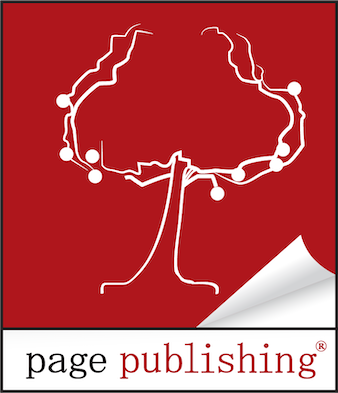
Balancing multiple writing projects at once can be both thrilling and challenging. Whether you’re managing a novel, blog posts, freelance assignments, or short stories, keeping everything organized is key to avoiding overwhelm and ensuring you stay on track. The good news is that there are simple, general tools—like calendars, planners, and tracking methods—that can help you stay focused, manage deadlines, and maximize productivity across your various projects. Here are some powerful organizational tools that can help you juggle multiple writing projects effectively.
1. Calendars: Time Management Made Simple
A well-maintained calendar is one of the most powerful tools for organizing multiple writing projects. It allows you to map out deadlines, appointments, and writing goals over a daily, weekly, or monthly view. Whether you prefer a physical or digital calendar, this tool ensures you never miss a crucial deadline.
- Plan Out Deadlines: Write down key dates for each project—whether it’s the completion of a chapter, the submission of a blog post, or an important milestone.
- Break Projects Into Smaller Tasks: Divide large writing projects into smaller, actionable tasks and spread them out over time. This helps prevent overwhelm and makes deadlines feel more achievable.
Set Reminders: Use reminders or alarms for critical dates, like submission deadlines or revisions, so you don’t overlook them. - Color-Code Events: If you’re using a digital calendar, color-code different writing projects to easily distinguish between them at a glance.
2. Planners: Structure Your Day with Purpose
A physical or digital planner is another essential organizational tool for writers juggling multiple projects. Planners give you a structure to break down your daily, weekly, and monthly tasks, making it easier to stay organized.
- Daily Task Lists: Write down specific tasks you want to accomplish for each project daily. A to-do list keeps you focused on what needs to be done and provides a sense of accomplishment as you check off completed items.
- Time Blocks for Writing: Allocate specific times of the day for each project. If you’re working on a blog post in the morning and a novel in the afternoon, block out time for each activity so that your writing time is clear and uninterrupted.
- Track Progress: Many planners include space to track progress or jot down reflections. This can help you assess how well you’re managing multiple projects and adjust your plan if necessary.
3. Notebooks: Capture Ideas and Stay Focused
Notebooks are great for capturing random ideas, jotting down notes for your writing projects, and organizing thoughts as you go. Whether you keep a physical notebook or prefer a digital note-taking tool, these spaces allow you to keep track of brainstorming sessions, character ideas, plot points, and research for each project.
- Separate Notebooks for Each Project: If you’re writing multiple pieces, consider having a separate notebook or section for each project. This helps you stay organized and prevents cross-contamination of ideas.
- Create a Table of Contents: In larger notebooks, create a table of contents at the beginning to easily locate your ideas, outlines, or sections for each project.
- Use Sticky Notes or Index Cards: If you’re a visual thinker, sticky notes or index cards can be useful for organizing ideas, timelines, or character sketches for each writing project. You can easily move them around to fit your writing schedule.
4. Task Lists: Keep Track of the Details
Task lists are simple but highly effective tools for staying on top of the many details involved in writing multiple projects. A basic task list can be a digital checklist, a physical to-do list, or even a bullet journal.
- Break Projects into Actionable Tasks: Break each project into individual tasks and sub-tasks. For example, if you’re working on an article, tasks might include researching, drafting, editing, and finalizing. This breakdown keeps you focused and ensures nothing gets overlooked.
- Prioritize Tasks: If you’re balancing more than one project, prioritize tasks by deadlines or importance. This can help you avoid getting stuck on one project while letting others fall behind.
- Track Task Completion: Check off tasks as you complete them. This simple act can boost your sense of achievement and keep you motivated
5. Project Management Systems: Visualize Your Workflow
Even without specific software tools, you can create your own project management system using simple visual aids to manage your workflow. These methods help you organize and visualize the steps needed for each writing project.
- Create a Workflow Chart: Draw a basic workflow chart for each project, outlining the steps from beginning to end. This can be as simple as a flowchart or list of stages like research, drafting, editing, and submission.
- Use a Kanban System: The Kanban method, often seen in project management tools, is simple to replicate with paper or a whiteboard.
- Create columns labeled “To Do,” “In Progress,” and “Completed,” and move tasks between columns as you work through them.
- Use a Whiteboard or Bulletin Board: A physical whiteboard or bulletin board can serve as a giant project board where you can post reminders, project breakdowns, deadlines, and tasks. The visual layout helps you see what needs to be done at a glance.
6. Timelines: Keep Track of Long-Term Goals
When working on multiple writing projects, it’s easy to lose sight of long-term goals. A visual timeline can help you track the milestones for each project over time.
- Create a Project Timeline: For each writing project, draw a timeline with major milestones (e.g., first draft completed, editing finished, submission sent). This can help you plan out your work and make sure you’re staying on track.
- Set Time Estimates: Estimate how long each part of a project will take and mark those estimated dates on your timeline. This can help you allocate time effectively and manage your workload.
- Adjust as You Go: Your timeline should be flexible enough to adjust as needed. If a project takes longer than expected, move other tasks around to accommodate the new timeline.
7. Goal-Setting Sheets: Track Progress and Stay Motivated
Goal-setting sheets help you set clear objectives for each project and break those goals down into manageable chunks. By tracking progress toward these goals, you can stay motivated and avoid feeling overwhelmed by multiple projects.
- Set Short-Term and Long-Term Goals: For each project, set both long-term goals (e.g., complete a novel draft by the end of the year) and short-term goals (e.g., write 500 words a day). This will help you stay on track and measure progress.
- Track Milestones: As you hit milestones (e.g., finishing a chapter or meeting a word count goal), record them on your goal-setting sheet. This can be incredibly motivating and show you how much you’ve accomplished.
- Review and Adjust Goals Regularly: Revisit your goals regularly and adjust them based on your current progress. If a project is falling behind, you can make adjustments to stay on track.
8. Timers: Boost Focus and Productivity
Timers are simple but effective tools for maintaining focus and managing your time across multiple writing projects. Using a timer can help you stay productive and avoid procrastination.
- Use Time Blocks: Use a timer to allocate specific amounts of time for focused work on each writing project. For example, set a timer for 25 minutes of focused writing, then take a 5-minute break. This method, known as the Pomodoro technique, is highly effective for productivity.
- Set Time Limits for Tasks: Assign time limits for each task, such as drafting, editing, or brainstorming. A timer keeps you accountable and ensures that you’re making progress without getting lost in perfectionism.
9. Review Sheets: Reflect on Your Work
Review sheets help you track your projects’ progress and reflect on what’s working and what’s not. Regularly reviewing your writing progress keeps you motivated and ensures you’re on track with your goals
- Evaluate Progress: Use review sheets to jot down what you’ve accomplished and what’s left to do for each project. Regular reviews help you stay on top of deadlines and make adjustments when necessary.
- Track Challenges: Reflect on what challenges or roadblocks you’ve faced, and note how you can adjust your schedule or process to work through them in the future.
- Celebrate Achievements: Be sure to acknowledge your accomplishments. Whether it’s finishing a draft or reaching a milestone, recognizing your progress is key to maintaining motivation.
Conclusion
Staying organized when writing more than one project doesn’t require fancy software or complicated systems. Simple tools like calendars, planners, task lists, and timelines can help you manage your projects, meet deadlines, and stay motivated. By keeping track of your goals, prioritizing tasks, and maintaining a clear writing schedule, you’ll be able to juggle multiple projects with ease and move forward with confidence. Whether you prefer physical or digital tools, find the ones that work best for your workflow, and use them consistently to stay on top of your writing projects.
